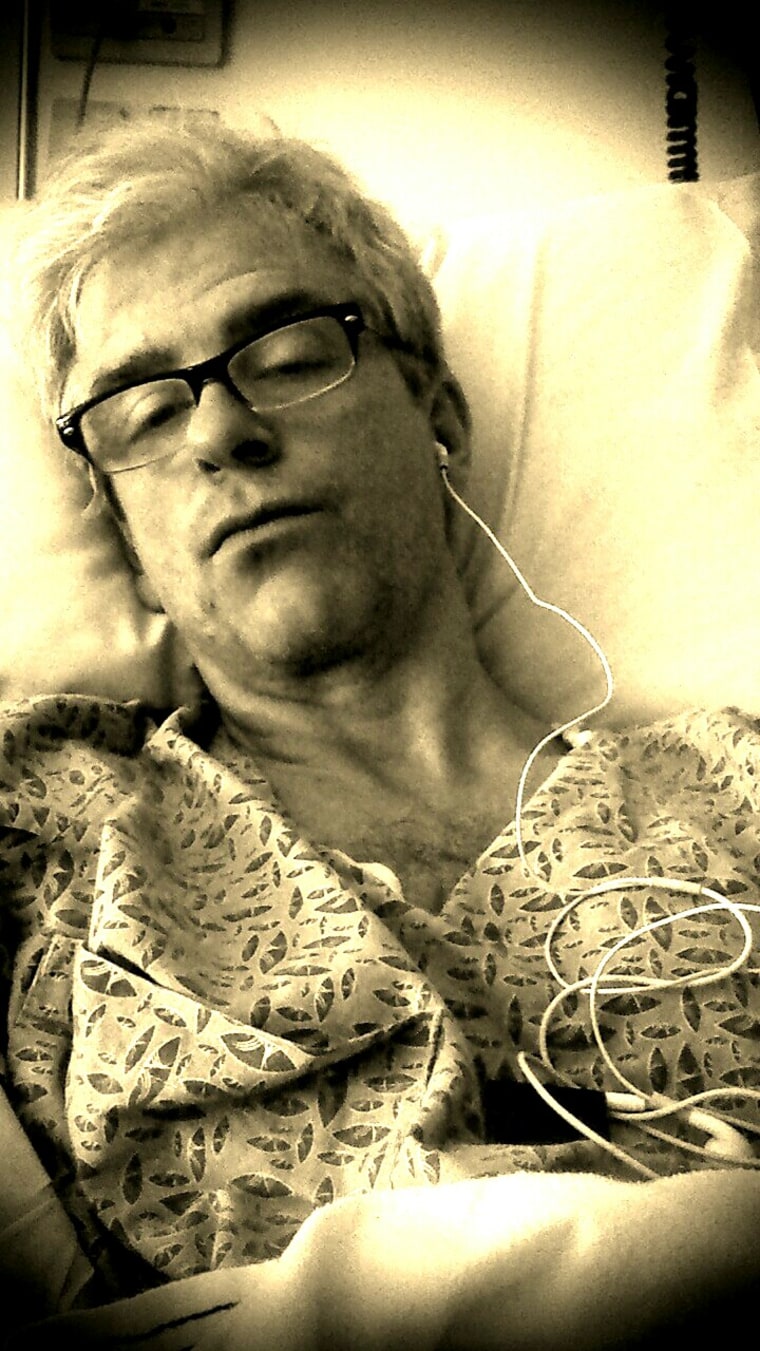Even though his own father had prostate cancer, Mark Shanahan, a journalist at the Boston Globe, didn't know much about the disease until he was also diagnosed with it seven years ago.
He didn't know what the standard treatment for prostate cancer was, despite it running in his family, and he wasn't even that familiar with what the prostate does. (It's a gland located between the bladder and penis and secretes fluids to protect the sperm.) Shortly after his diagnosis, Shanahan, now 55, realized that he was like most people in his lack of knowledge of this disease, which affects 1 in 9 men and kills 1 in 41, per the American Cancer Society.

That's, in part, why Shanahan decided to share his story. Yes, prostate cancer and treatment can lead to uncomfortable topics, like impotence and incontinence. But, as Shanahan pointed out, half the population is at risk, and the other half knows and loves someone who is. So he wrote an article for the Globe and started a podcast, "Mr. 80%," a reference you'll have to read or listen to fully understand.
"When I would talk about this with my friends with my colleagues ... some of them were like, 'Dude, why are you talking about this?' But others were totally interested," Shanahan told TODAY. "I set out to tell a really interesting story that I knew would surprise and inform a lot of people. ... But ... it's gratifying to know that people are ... paying attention and talking about their situation."
Because Shanahan candidly discusses his sex life and other intimate anecdotes in the podcast and article, he's received thousands of emails calling him "brave" and "courageous," he said. But he doesn't exactly agree with this characterization.
"The implication, of course, is that somehow the normal person wouldn't talk about it," he explained. "(Incontinence and impotence) are two things that men don’t want to talk about it, which is totally lame. ... (Prostate cancer) is really something that’s not optional to understand and be aware of."
Shanahan's oncologist, Dr. Mark Pomerantz at Dana-Farber Cancer Institute in Boston, agrees with him on that last assertion. He told TODAY that most men who live into their 70s and 80s are harboring a prostate cancer, and it's by far the most common cancer among men in the United States, except for skin cancer.
"It's the kind of cancer that we do want to diagnose early," Pomerantz said. "And as we learned from Mark's case, it can be cured."
While Mark was diagnosed younger than most men — at 48 versus the average age of 66 — he was able to be treated primarily with hormonal therapy, the goal of which was to drastically reduce his testosterone production. (Some men need their prostates removed, which is where the incontinence and erectile dysfunction come into play.)

"The issue that Mark faced and that he spends a great deal of time appropriately going into is that when a guy has his testosterone taken away, there are physiologic effects," Pomerantz explained. These can include hot flashes like women get in menopause, reduced bone density and increased stomach fat.
"Libido goes out the window," Pomerantz added. "What I think Mark really brings to light is how this was unbeknownst to him at the time ... how much the inner workings of his body were tied up with his identity as a person, as a man."
Shanahan, too, believes the idea of manliness is the main reason men avoid discussing prostate cancer. "Culturally, we, and men in particular, have a hard time talking about issues related to masculinity," he said.
Even if you're uninterested in learning about impotency and incontinence, Shanahan still wants to instill a few basic facts about prostate cancer. For example, Black men are at much higher risk, as are men with a family history of it. In addition, your treatment can and should be individualized, both Shanahan and Pomerantz said. Here are a few more risk factors to note:
- Age, the risk rises rapidly after age 50
- Prostate cancer is most common in North America, Northwestern Europe, Australia and on Caribbean islands
- Inherited gene mutations can raise your risk
- Other lifestyle factors may be related to risk (diet, obesity, smoking and more)
For those who haven't been diagnosed, Pomerantz stressed the importance of talking to your doctor by age 50 about possibly getting screened for prostate cancer, again, especially if you're Black or it runs in your family. Most prostate cancers are found early, through screening, and usually cause no symptoms. Yet, more advanced prostate cancers can lead to symptoms like problems urinating, blood in urine or semen, erectile dysfunction and more.
If you've been diagnosed with prostate cancer, be aware that some forms will only require monitoring and no treatment, per Pomerantz, while others may be so aggressive that treating the whole body with medicine should come before any surgery or radiation.
"If you're 45, 50, 55, 60, the chance that you're going to develop prostate cancer is excellent," Shanahan said. "The question is: What are you going to do about it?"
